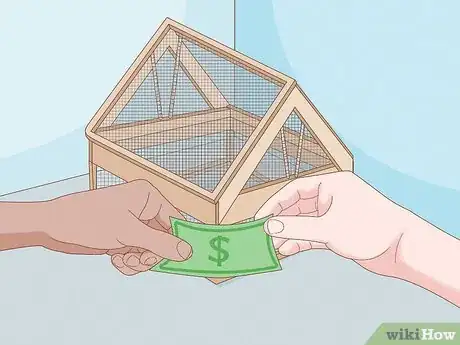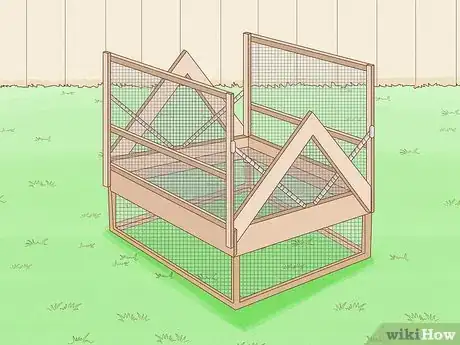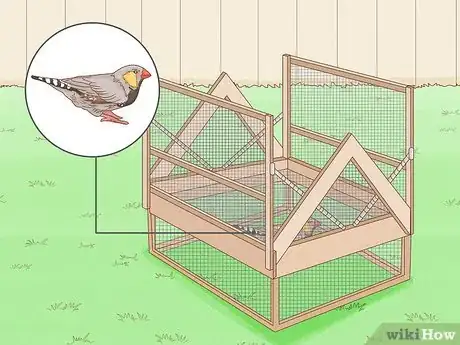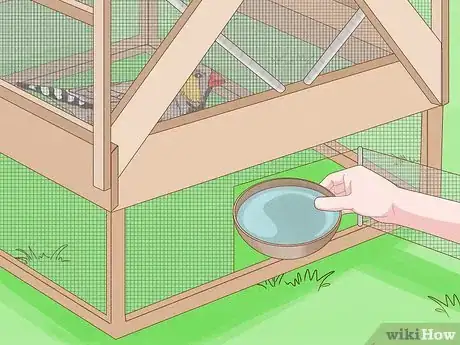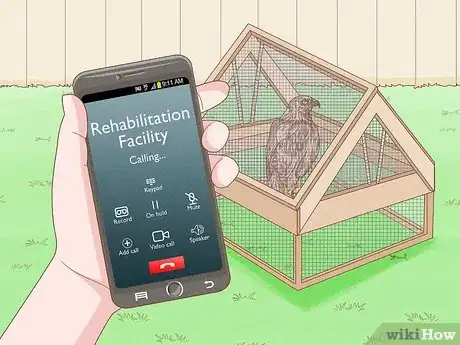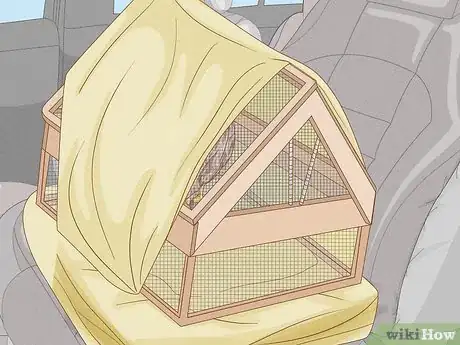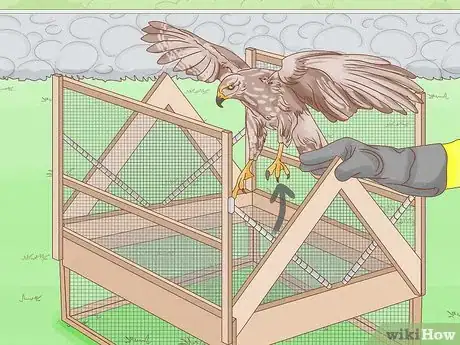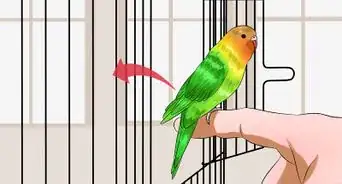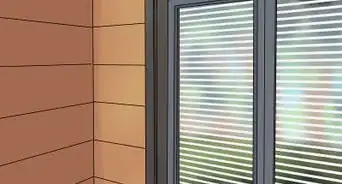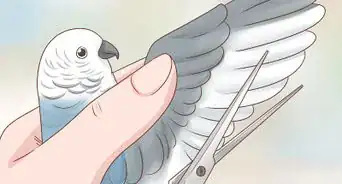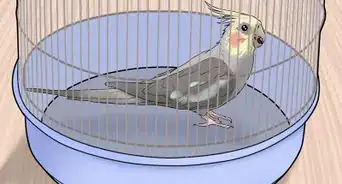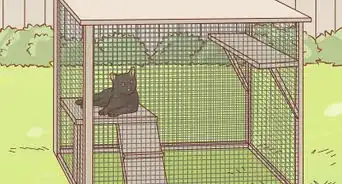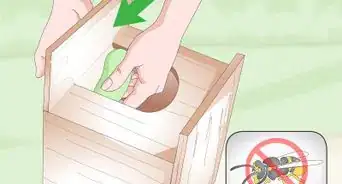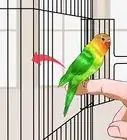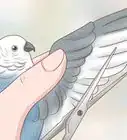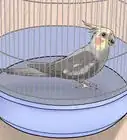This article was co-authored by Scott McCombe. Scott McCombe is the CEO of Summit Environmental Solutions (SES), a family-owned local pest solutions, animal control, and home insulation company based in Northern Virginia. Founded in 1991, SES has an A+ rating with the Better Business Bureau and has been awarded “Top Rated Professional,” and “Elite Service Award" by HomeAdvisor.
This article has been viewed 71,234 times.
Hawks are fascinating and beautiful birds. They're also pretty aggressive predators, so they're best left to fly free in the wild. You shouldn't try to catch a hawk for fun or to keep it as a pet unless you're licensed to practice falconry. However, if you have a hawk that is bothering some of your animals, you might need to trap it to relocate it. If possible, ask an expert for help. If you need to do it yourself, buy a good trap and use precautions. This might sound like a lot, but don’t worry! We’ve got answers to all of your questions. Just keep reading!
Steps
Should I use bait to attract a hawk?
-
1Bait is a great way to draw the hawk towards your trap. Use pigeons, starlings, sparrows, zebra finches, or mice to attract hawks. If necessary, you can use grasshoppers. However, grasshoppers are not very tempting to larger birds.[3]
- Refer to the manufacturer’s instructions to find out how to place the bait in your trap.
- Most goshawk traps have “bait boxes” that protect the bait from the hawk. After catching the hawk, you can release the bait if you’d like.
-
2Check the trap often to see if you need to replace the bait or water. The trap needs to be checked at least twice a day. The Swedish goshawk trap will protect the hawk from other predators. However, the bird can still become dehydrated or overheated if it’s left alone for too long.[4]
How do I relocate a hawk that I caught?
-
1Put the hawk safely in your car. When you relocate a hawk, you give it a new place to hunt and build nests. However, you need to drive at least 20 miles (32 kilometers) away from your home before releasing the bird. Otherwise, it will return to its old hunting grounds. Cover the trap with a blanket to block out any light. This will help keep the bird calm as you move it.[6]
- Next, carefully lift the trap and place it securely in the trunk of your car. Turn on the air-conditioning as hawks can overheat easily in small spaces.
- If your trunk isn’t big enough for the trap, place it on a seat. Use a seatbelt to secure it.
- Lay a thick towel down under the trap to protect your car from bird droppings.
- If the hawk is injured, immediately take it to a raptor rehabilitation center.
-
2Release the hawk. Set the trap in a secluded area. Remove the cloth from the top of the trap and carefully open one of the doors. Stand away from the trap to allow the bird to leave at its own pace. Don’t leave until the bird has left the trap.[7]
- Wear thick gloves to protect your hands while you open the trap.
- If the hawk refuses to leave the trap, it may be dehydrated or sick. Call your local raptor rehabilitation center for advice.
Can I catch a hawk for a pet or for falconry?
-
1Don’t catch hawks as pets. Hawks are wild predatory birds and do not make good pets. It costs thousands of dollars a year to properly care for and house a hawk. Additionally, in some countries, you need a permit to catch hawks. When you obtain this permit, you will be asked to provide your reasons for catching a hawk. If you catch a hawk without a permit, you may face severe legal consequences.[8]
- For example, in the U.S. you can get six months in jail and a $15,000 fine for catching a hawk without a permit.
-
2Avoid catching hawks for falconry. There are strict rules surrounding the capture and release of hawks for falconry. Only experienced, licensed falconers can catch hawks for this purpose. These falconers have completed a year-long apprenticeship and obtained several permits in order to catch falcons.[9]
- If you’re interested in becoming a falconer, look for local falconry groups in your area. These groups will help you find an apprenticeship with an experienced falconer.
- Once you have an apprenticeship, the falconer will help you catch, house, and train hawks.
Expert Q&A
Did you know you can get expert answers for this article?
Unlock expert answers by supporting wikiHow
-
QuestionHow can I get rid of hawks in my yard?
 Scott McCombeScott McCombe is the CEO of Summit Environmental Solutions (SES), a family-owned local pest solutions, animal control, and home insulation company based in Northern Virginia. Founded in 1991, SES has an A+ rating with the Better Business Bureau and has been awarded “Top Rated Professional,” and “Elite Service Award" by HomeAdvisor.
Scott McCombeScott McCombe is the CEO of Summit Environmental Solutions (SES), a family-owned local pest solutions, animal control, and home insulation company based in Northern Virginia. Founded in 1991, SES has an A+ rating with the Better Business Bureau and has been awarded “Top Rated Professional,” and “Elite Service Award" by HomeAdvisor.
Pest Control Specialist
Warnings
- If at all possible, leave hawk catching to the professionals. Inexperienced catchers can easily injure hawks by breaking wings, bending feathers, or hurting their legs.⧼thumbs_response⧽
References
- ↑ https://www.aphis.usda.gov/wildlife_damage/reports/Wildlife%20Damage%20Management%20Technical%20Series/Hawks-and-Owls.pdf
- ↑ https://www.aphis.usda.gov/wildlife_damage/reports/Wildlife%20Damage%20Management%20Technical%20Series/Hawks-and-Owls.pdf
- ↑ http://www.themodernapprentice.com/traps_and_trapping.htm
- ↑ http://www.themodernapprentice.com/traps_and_trapping.htm
- ↑ https://myfwc.com/media/21806/living-with-raptors.pdf
- ↑ https://www.aphis.usda.gov/wildlife_damage/reports/Wildlife%20Damage%20Management%20Technical%20Series/Hawks-and-Owls.pdf
- ↑ https://www.aphis.usda.gov/wildlife_damage/reports/Wildlife%20Damage%20Management%20Technical%20Series/Hawks-and-Owls.pdf
- ↑ http://www.themodernapprentice.com/questions.htm
- ↑ http://www.themodernapprentice.com/questions.htm
